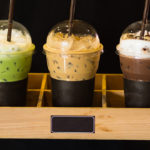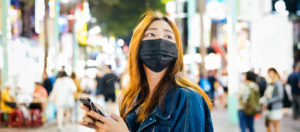Feb 19th marks the end of Lunar New Year celebration. Now it is a good time to reflect on great indulgence and prosperity – aka WAY too many dumplings and excessive shopping :S. In Part I of the Year of the Pig Dose, we briefly touched on major brands, like Coach, Pandora and Gucci, created dedicated Lunar New Year collections. It is no surprise luxury brands are heavily invested in this traditional Asian holiday. With Asian Americans’ pursuit of affluent lifestyle and Chinese Economy growth rates at 5%, brands are rushing to harness their purchase power during this important cultural occasion.
This is especially true for the year of the Pig. Chinese zodiacs have historically carried important cultural connotations. Each animal has unique representations. Although usually associated with filth and laziness in Western culture, pig represents wealth and prosperity in Chinese culture. As a favorite food among all social classes, pig symbols feasting. In fact, the word “home” in Chinese “家” is literally a stylized depiction of pig under a roof. As a pivotal symbol of sustenance and wealth, pig has thus been widely represented in Chinese art over the last 2,000 years. Many businesses today still displays a golden pig for good cash flow and commercial success.
So how did brands do to celebrate the year of the pig, one of the most important icon in Chinese culture? Let’s take a look at the Hot and Not’s of this Year of the Pig.
HOT
- #1 Peppa Pig – Sichuan Sizzling HOT!
Make no mistake, but the hottest celebrity of the year is a cartoon pig. Peppa pig, the British cartoon has taken over the holiday! The character, once an icon of rebellion and freedom among Gen-Zers in China, has now been adopted into a movie “Peppa Celebrates Chinese New Year” to promote family togetherness. With Alibaba behind its production, the promotion of the movie has taken over streets and malls this holiday. The trailer posted on WeChat explaining what is Peppa Pig garnered 835 Million views in no time.
Nickelodeon saw this opportunity and released an episode of Peppa Pig about Lunar New Year(Go ahead and watch it, I won’t tell anyone). The episodes teaches children about the holiday including lanterns, fireworks, and dragon dances. Numerous sellers on Taobao (a Chinese Shopping website) are taking advantage of Lunar New Year and producing counterfeit Peppa Pig luxury brand crossover merchandise that is selling like hot cakes!
Now a global sensation, Peppa Pig has became the face of 2019 Lunar New Year celebration.
- #2 Gucci – “So Hot Right Now.”
As one of millennials’ favorite luxury brand, Gucci has been doing great incorporating Lunar New Year into its brand. With 35 different special edition merchandises including watches, wallets, handbags, and sneakers, they have achieved very positive feedback on the campaign and well recognized in the fashion industry as one of the most successful Lunar New Year campaigns.
- #3 Barney’s Burger
As part of Barney’s designer burger series, Alexander Wang introduced a Lunar New Year special burger meal. It not only celebrates the designer’s Chinese American heritage, but also features some very traditional Chinese flavors to attract New Yorkers into the famous cafe. Another great example of brands pushing out authentic experience that appeals to the cultural duality of Asian Americans.
NOT SO HOT
- Burberry – Awkward First Timer
Burberry’s first-ever Lunar New Year campaign made it huge on the headline, but unfortunately only because of its poor execution. The creepy fashion shots with emotionless models and awkward vibe experienced major backlash. Many commented its reminiscent of a horror movie, which is completely opposite of the happy family reunion during Lunar New Year. Talk about a major bomb. The controversy was so huge that “#BurberryChineseNewYear#” has been viewed over 500,000 users and commented on by 74,000 times on Sina Weibo.
Nuances can make or break a campaign or a brand. It reminds me a of a campaign that Dolce and Gabbana released online called “DG Loves China”. It meant to pay tribute to the Chinese consumers but ended up appropriating the culture and depicting Chinese women in a very stereotypical/racist way. With the backlash, D&G had to delete their post within 24 hours and canceled their Shanghai runway show that was supposed to be several days later. A trending tag of “Boycott Dolce” instantly was discussed over 18,000 times.
After looking at how brands leveraged the Lunar New Year, we can see how blurry the line can be between major success and major failure. Subtle cultural nuances can really make or break a campaign, and sometimes an entire brand.







